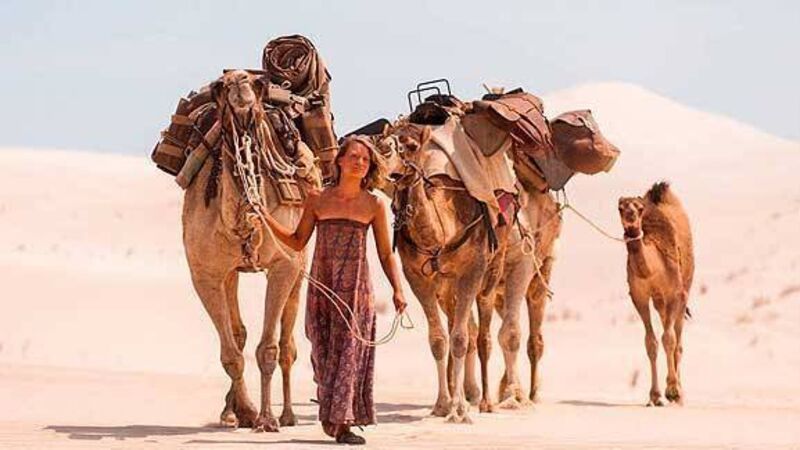Movie reviews: Tracks, Living In A Coded Land, The Other Woman

“It’s best to throw a grenade where you’re standing and jump, and pray,” says Robyn Davidson (Mia Wasikowska) early on in It’s an appropriately explosive image for Davidson’s character, who in 1977 set out to trek 1,700 miles across the Australian Outback with only her dog Diggity and three recently tamed feral camels for company. Directed by John Curran and adapted from Robyn Davidson’s own account of her journey, Tracks is as much a fascinating psychological exploration as it is a trek into one of the last great unpopulated tracts of land on the planet. Davidson is the daughter of an adventurer but her expedition is no kind of homage to her father. Instead, the quiet, shy, young woman simply craves solitude and silence, which makes even the sporadic intrusions by Rick Smolan (Adam Driver), a photographer with National Geographic (which sponsored her adventure), almost unbearable. In theory, we should identify more with Rick and his inability to understand Robyn, given that he’s the gregarious kind who revels in human company. Wasikowska, however, is compelling, her performance understated and natural, giving enough to persuade us that Robyn — operating in an ultra-macho world — is fully entitled to her privacy, and that being an independent young woman who prefers her own company doesn’t necessarily equate to misanthropic behaviour. Mandy Walker’s cinematography beautifully captures the haunting immensity of the Outback and the desert, at times giving the landscape an alien look, as if Robyn was trudging across Mars. John Curran directs with a gentle hand on the tiller, allowing the story to meander along according to the dips and swells in the physical and emotional landscape, rendering Davidson’s epic trek an intensely intimate adventure.
’Documentary’ just can’t do enough to describe Pat Collins’s and ‘Filmic Essay’ would send anyone running for the hills. But it’s the hills where you’ll run with the director; as with 2011’s feature debut Silence, Collins likes to ruminate and explore rural areas and finds the midlands here an “antique land of fusion and transfusion”. Splicing together interviews, archive footage (Conor Cruise O’Brien, Seamus Heaney, Patrick O’Connor, Sean O’Faoloin, and John B Keane are just some of the writers and historians who appear), and long, mesmerising shots of the Irish countryside, Collins takes the viewer on a dreamy expedition from the Battle of the Boyne through to contemporary Ireland. His thesis traces a line between the Irishman that emerged from the fallout of William’s defeat of the Jacobites to those currently in the financial sector. It occasionally tangents from this through-line; confusion can reign as to why certain episodes are present. But even those sumptuous digressions boast honesty and warmth. A melancholic journey, Living In A Coded Land is a layered exploration of the Irish psyche — nothing comes close to its originality.











